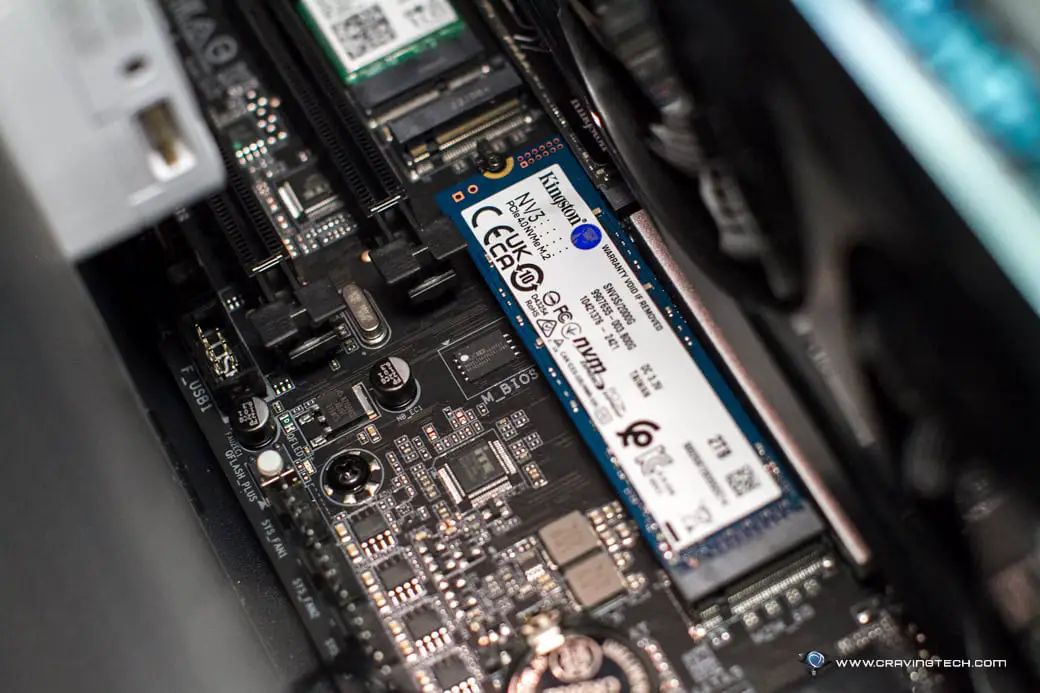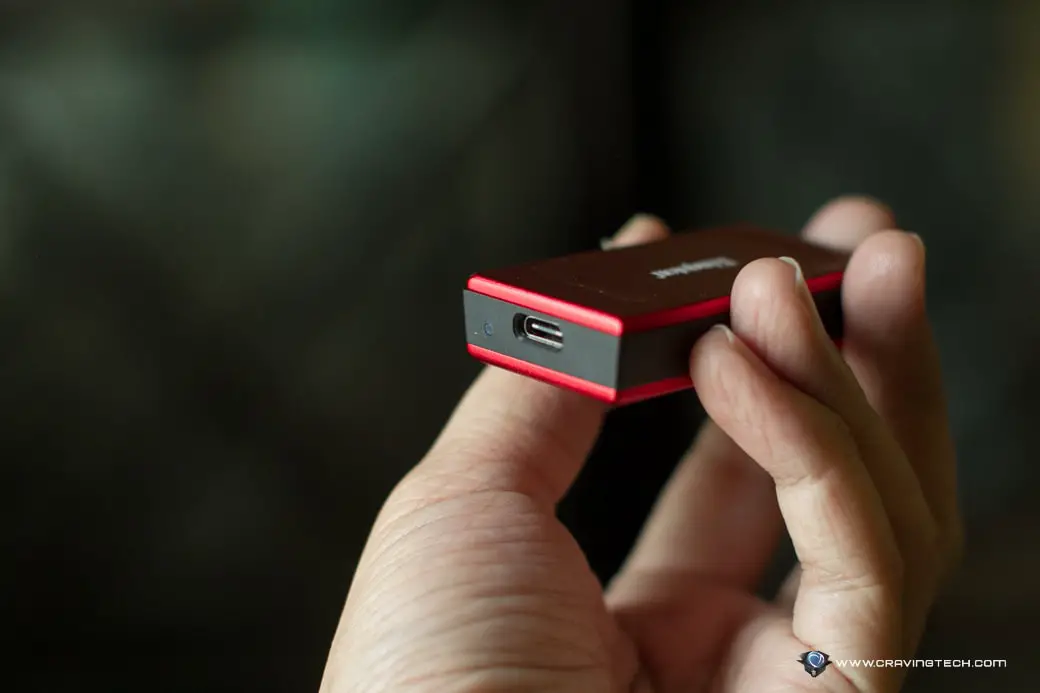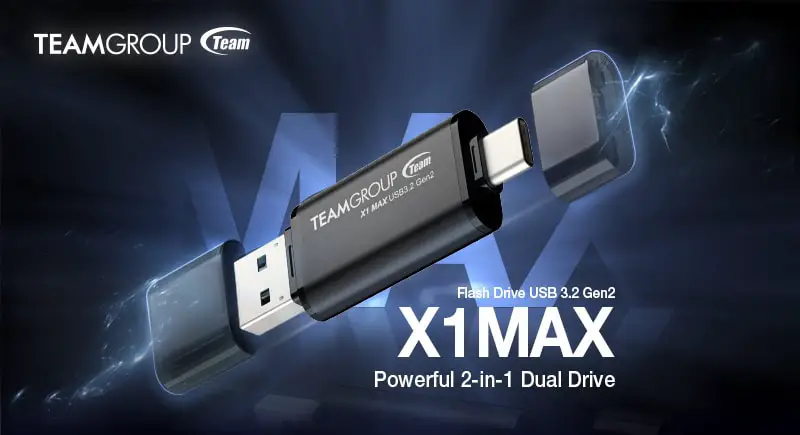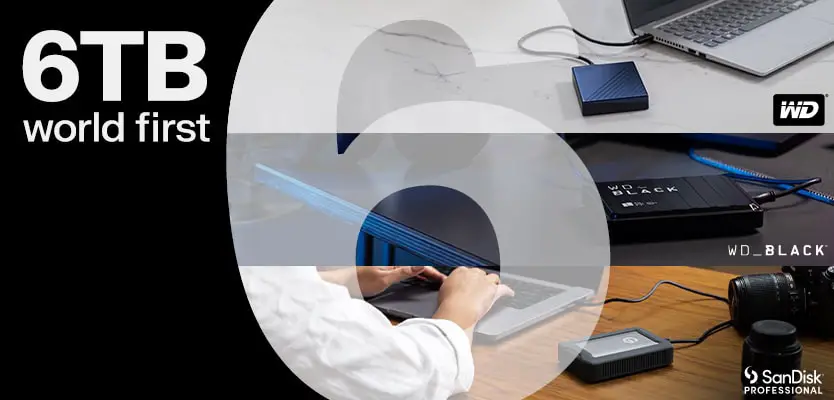While there are PCIe Gen5 around, PCIe Gen4 M.2 SSDs are still popular as they are supported in most modern motherboards and Gen5 is still quite pricey these days. To most people, the Gen4s still offer great performance as we can see here today and it’s also backward compatible with PCIe 3.0 ports.
The CARDEA A440 from T-Force supports up to 7,000 MB/s read and 6,900 MB/s write speed (depending on configurations). The review unit I have here is the 1TB model which supports up to 7,000 MB/s read and 5,500 MB/s write speed. And boy, that is blazing fast.
I’m certain my WD Black SN850 would last a long time with its lightning fast, 7,000MB/s read and 5,300MB/s write speed. It has now been beaten by the T-Force CARDEA A440 which comes in an M.2 2280 form factor.
The CARDEA A440 from T-Force is unlike any other M2 SSD I’ve ever reviewed because inside the packaging, it comes with two (yes, two) kinds of heatsink options: A patented high-strength aluminum heatsink (capable of reducing the temperature by up to 15%) or a patented ultra-thin graphene heatsink (capable of reducing the temperature by up to 9%).



This allows flexible installation that depends on your needs and build. For example, if your M2 slot on the motherboard is blocked by another component, you probably can’t afford having the luxurious, tall, heatsink due to the limitation. With the Aluminum heatsink, the unit will have a height clearance of 12.9mm.
In this case, you can go for using the included ultra-thin Graphene heatsink which gives a height clearance of just 3.7mm, and offers the highest compatibility to any build environment. Sure, it’s not as good as the Aluminum heatsink to dissipate heat but it is still much better than not having a heatsink at all (as apparent with my other M.2 SSD running in my machine Kingston KC3000).

Here are the specs of my machine:
- Processor: Intel i7 14700K
- Motherboard: GIGABYTE Z790 AERO G
- RAM: Kingston FURY Renegade DDR5 32GB 7200MB/s
- Cooler: CORSAIR iCUE H115i RGB AIO Liquid CPU Cooler
- Fans: 5x CORSAIR QX120 RGB
- Case: Lian Li LANCOOL 216
With the ultra-thin Graphene heatsink, the drive can get hot rather quickly if you are running heavy operations like transferring lots of big files for a while. During the test, transferring 110,000 of files in 4,234 folders (203 GB in total) sent the drive to about 76-79-ish degrees Celsius of temperature. Which is similar to when I was running CrystalDiskMark to benchmark the speed of the drive.
In contrast, when the Aluminum heatsink was used during my testing, copying the same files still can keep the temperature rise to a minimum.


This improvement is also noticeable when I ran CrystalDiskMark to benchmark the read/write speed. Benchmarking software is normally quite intense and stress any storage device easily. With the ultra-thin graphene heatsink, I can see that the drive quickly gets throttled as the temperature rises rather quickly during the second test in a row.


But with the better heatsink solution (the Aluminum heat sink), I could do two tests in a row without a hitch. The first test only sent the temperature to 50 degrees of Celsius and the consecutive test sent it to 59 degrees. That’s way below the throttling temperature (which is normally in the mid 70’s and above). This is actually very, very impressive.



So in short, if you can use the Aluminum heatsink, please do as it is the best option that gives you more consistent, high performance during the read/write process. But if not, you can still use the Graphene one and it will still even be better than not having a heatsink at all, like the Kingston KC3000 currently running my Windows 11.
During my tests with different M.2 SSDs running in my machine and monitoring temperatures with HWMonitor, I’m very happy with how the drive performs, especially when the Aluminum heatsink option is used. For most users, you shouldn’t experience any thermal throttling at all with this configuration.
T-Force CARDEA A440 M.2 PCIe SSD Review Conclusion
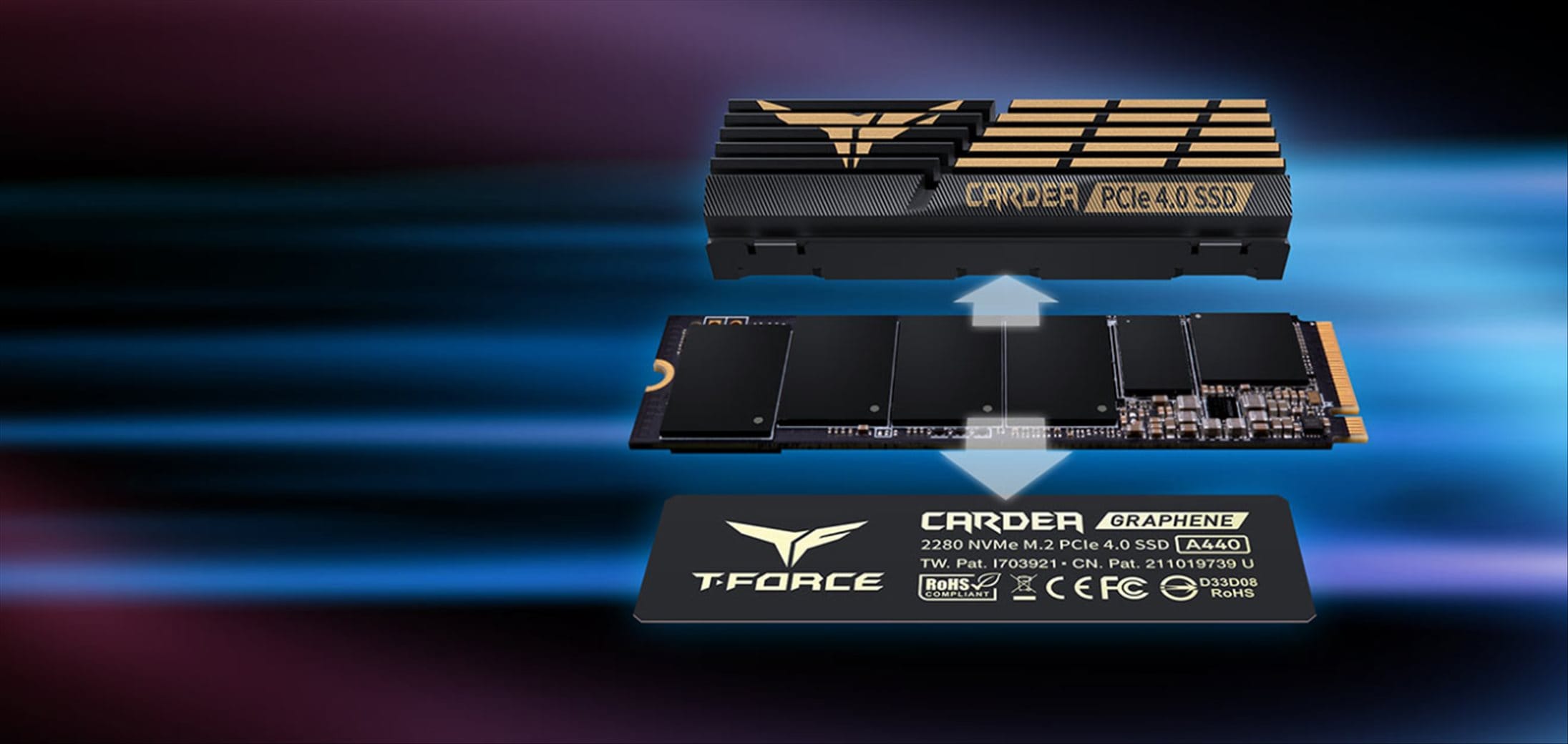
The T-Force CARDEA A440 is an impressive PCIe Gen4 M.2 SSD that offers exceptional performance and versatility. With read speeds up to 7,000 MB/s and write speeds up to 5,500 MB/s for the 1TB model (I even managed to get 6,000 MB/s write speed), it delivers blazing-fast data transfer rates that will satisfy even the most demanding users. The inclusion of two heatsink options – a high-performance aluminum heatsink and an ultra-thin graphene heatsink – sets this SSD apart from its competitors, allowing for flexible installation in various build environments.
While the Aluminum heatsink provides superior cooling performance, the Graphene option offers a viable alternative for space-constrained setups. In my tests, both heatsinks proved effective in managing temperatures, with the aluminum variant showing particular prowess in maintaining consistent performance during intensive operations.
For users looking to upgrade their storage without breaking the bank on PCIe Gen5 SSDs, the CARDEA A440 presents an excellent balance of speed, thermal management, and compatibility. Its backward compatibility with PCIe 3.0 ports also ensures a wide range of system support. Overall, the T-Force CARDEA A440 is a top-tier choice for those seeking high-performance storage solutions in the current market. It also has a 5 year limited warranty.
You can purchase it in Australia at PC Case Gear.
Disclosure: CARDEA A440 M.2 PCIe SSD 1TB review sample was supplied for reviewing
T-Force CARDEA A440 M.2 PCIe SSD Review
Overall
Summary
The T-Force CARDEA A440 is a lightning-fast PCIe Gen4 M.2 SSD that impresses with its dual heatsink options, excellent thermal management, and consistently high performance, making it a standout choice for users seeking top-tier storage without the premium cost of Gen5 SSDs.
Pros
- Two alternate heat sink options included in the packaging
- Impressive performance
- Impressive idle temperature and heat dissipation with the Aluminum heat sink
Cons
- The Graphene heat sink helps to dissipate heat but not for continuous, high-performing tasks

